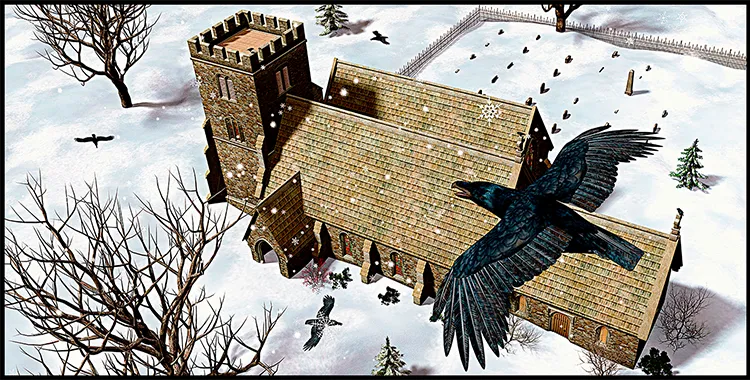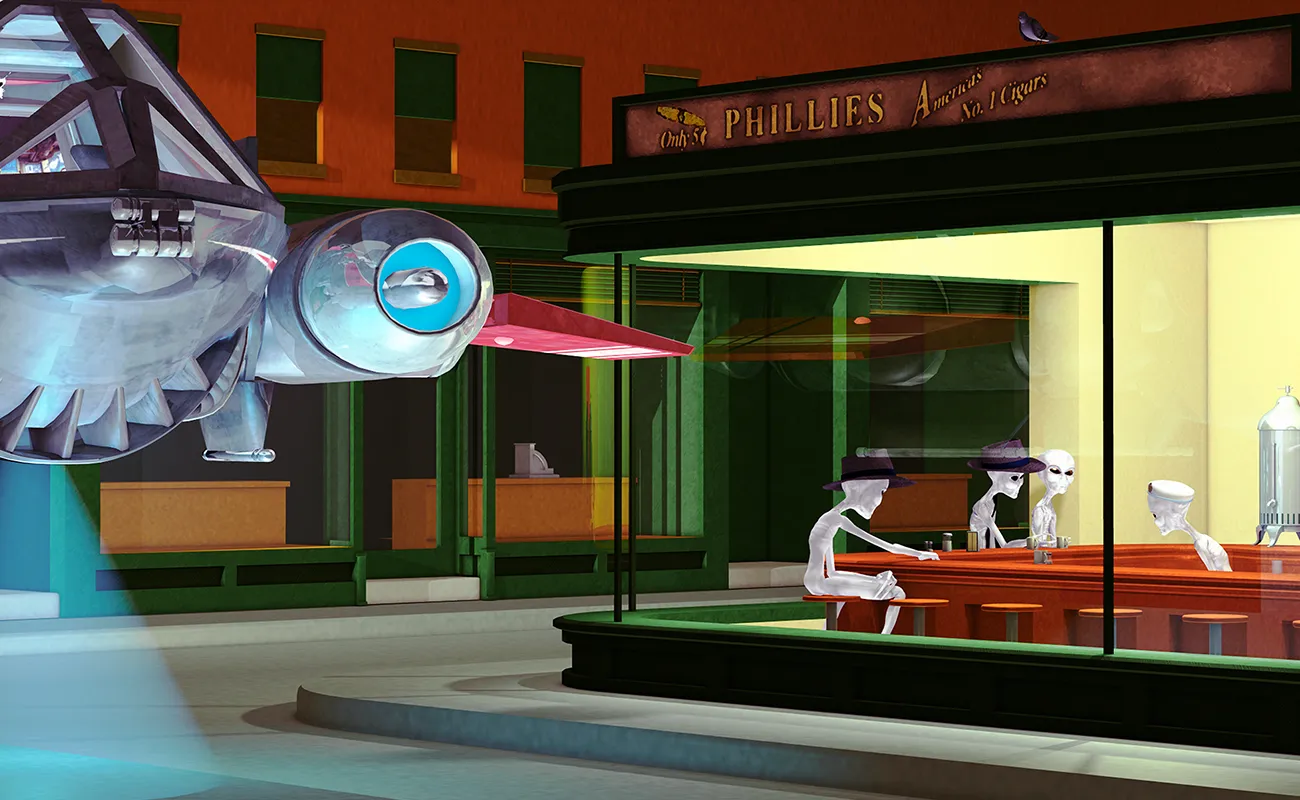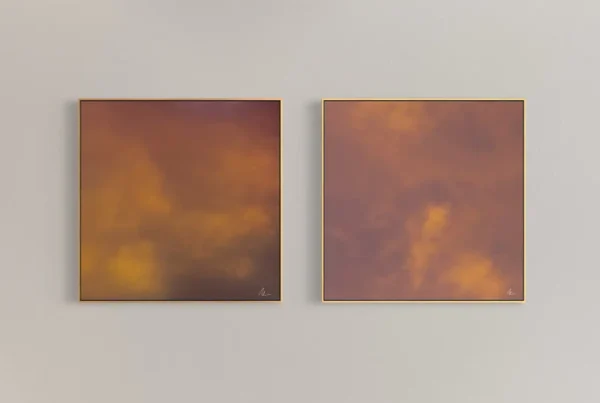“When I discovered the Macintosh, and the mouse in 1984, it changed my life. I now had a powerful tool with which to convey my thoughts and ideas. And I could draw without pain.”
A Visionary Journey: From Analog Beginnings to Digital Mastery
Peter J. Sucy‘s artistic journey is rooted in a unique blend of traditional and cutting-edge technologies. Born with an innate talent for drawing, he initially considered architecture as a potential career. However, an autoimmune disease made drafting too painful. He discovered filmmaking as a senior in high school, and his first film, an animated chess game, took first place at the Wilson, NY International Film Festival in 1972. This success encouraged him to pursue filmmaking and animation. During his early college years, he explored still photography and designed lighting for six theater productions at Monroe Community College. This eclectic mix of experiences laid a robust foundation for his future endeavors in the realm of digital art.
Peter’s passion for animation led him to the Rochester Institute of Technology (RIT), where he earned a BFA in Photo Illustration in 1980. In his senior year, he worked as the cinematographer on a class short film, which went on to win a Movies on a Shoestring Award at the Rochester International Film Festival. It was also during this time that his fascination with computer animation began to take shape, inspired by an early computer animation he witnessed being filmed at the Film Board of Canada. This pivotal moment propelled him to integrate technology with his artistic pursuits.
His tenure at Eastman Kodak, starting in 1980, became a crucible for innovation. At Kodak, Peter navigated the nascent stages of digital photography, collaborating with pioneers like Steve Sasson, the inventor of the first digital camera, to develop groundbreaking digital imaging solutions.
Peter’s contributions to Kodak were transformative. He was instrumental in the development of software and hardware innovations, including a digital camera patent for instant thumbnail previews, a feature now ubiquitous in digital cameras and smartphones. His pioneering efforts in beta testing and utilizing software such as Aldus PageMaker and Adobe Illustrator positioned him at the forefront of the desktop publishing revolution. This period of intense innovation was marked by numerous patents and accolades, including his recognition as one of Adobe’s first Photoshop Digital Masters in the early 1990s.

Peter J. Sucy: A Creative Odyssey
Peter’s transition from traditional to digital mediums was fueled by his relentless curiosity and desire to explore new artistic frontiers. His discovery of the Macintosh computer and its revolutionary mouse in 1984 marked a turning point, providing him with tools to express his ideas without the physical discomfort of using a pen or pencil. This newfound freedom enabled him to experiment with graphic software like MacPaint, Adobe Illustrator, and Photoshop, as well as page layout programs like Aldus Pagemaker.
At Kodak, Peter’s vision for a digital future often clashed with the company’s initial skepticism towards personal computers. However, his foresight and ingenuity eventually prevailed, as he demonstrated the potential of these new technologies to capture and edit photographs. His work included designing software applications and print drivers for Kodak’s early electronic products, and creating a Hypercard interactive database for home real estate sales, linked to a Kodak image storage device. One of his notable artistic achievements was the design of sample and special occasion images for the first generation of medium and large format thermal printers, showcasing his ability to blend technical proficiency with artistic creativity.
Beyond his professional contributions, Peter continued to create personal artworks using new tools such as 3D modeling and, eventually, 3D printing. His collaborative spirit and forward-thinking approach were evident in his close work with Steve Sasson, where they developed numerous ideas and white papers advocating for a digital, computer-based future for photography. This collaboration laid the groundwork for many of the digital imaging technologies that have become standard today. Peter’s legacy at Kodak is marked by his role in founding the Center of Creative Imaging in Camden, Maine, and the Digital Products Interoperability Lab, both of which were instrumental in advancing digital photography and imaging.

Innovative Inspirations: Crafting Unique Artistic Expressions
Peter J. Sucy’s artistic style is characterized by a unique blend of realism and mosaics, with themes that explore abstraction, geometric shapes, nature, and technology. His creative process is driven by the question, “What if?” This open-ended inquiry allows him to continuously push the boundaries of his mediums and explore new artistic possibilities. His workspace reflects his diverse interests, equipped with several iMac computers, an inkjet printer, multiple 3D FDM printers, and a 3D stereolithographic printer.
Despite the numerous distractions that come with a busy studio, Peter remains dedicated to his craft, spending as much time as possible immersed in his creative projects. His influences are as eclectic as his work, drawing inspiration from artists like M.C. Escher, Andrew Wyeth, Eliot Porter, and the whimsical ingenuity of Rube Goldberg. This blend of influences is evident in his works, which often incorporate elements of surrealism, meticulous detail, and complex mechanical interactions.
One of Peter’s most significant pieces is “How I Got To Here,” an interactive, multimedia sculptural mosaic that chronicles his artistic journey. This piece combines sculpted tiles, photographs, documents, and short stories that detail the events shaping his development. It features a QR code that links to an online version of the artwork, allowing viewers to delve deeper into each element using their phone or computer. This innovative approach not only highlights his artistic evolution but also showcases his ability to seamlessly merge traditional art forms with modern technology.

Peter J. Sucy: Pioneering the Future of Digital Art
Peter’s exploration of new mediums has been a constant throughout his career. His initial foray into animation eventually led him to embrace 3D depth as a dominant medium. Inspired by the early Pixar films he saw at SIGGRAPH around 1985, he sought tools that would allow him to create similar works on his Macintosh computer. In 1989, he acquired his first copy of StrataVision 3D, which has since evolved into Strata Design 3D CX, becoming his primary creative tool. This software enables him to create a wide range of art forms, including 3D animations, 3D and 2D wall art, 3D sculptures, mosaics, and virtual worlds.
Peter’s artistic journey has seen him experiment with various mediums since the 1970s, including cinematography, photography, video, animation, programming, interface design, software design, desktop publishing, lenticular imaging, 3D artworks, and even simple machines. His ability to adapt and innovate across these diverse forms of expression is a testament to his versatility and creative vision. One of his playful inventions is a 3D printed handgun that fires candy hearts, demonstrating his whimsical approach to art and technology.
Currently, Peter is working on an ambitious project that embodies his love for intricate design and interactive art. This 2’ x 2’ x 3’ high 3D printed, ball race interactive sculpture features three steel balls navigating three separate courses. Each course triggers the next in a chain reaction, inspired by the elaborate contraptions of Rube Goldberg. The first track, after two months of work, is nearly complete, with the next two tracks expected to take a similar amount of time. This project showcases Peter’s dedication to pushing the limits of 3D printing technology and his ability to create engaging, interactive art pieces that captivate and inspire viewers.
In every facet of his career, Peter J. Sucy has demonstrated a remarkable ability to blend art and technology, continuously pushing the boundaries of what is possible. His innovative spirit and commitment to exploring new mediums have cemented his legacy as a pioneer in digital art, inspiring future generations to embrace the limitless possibilities of creative expression.






